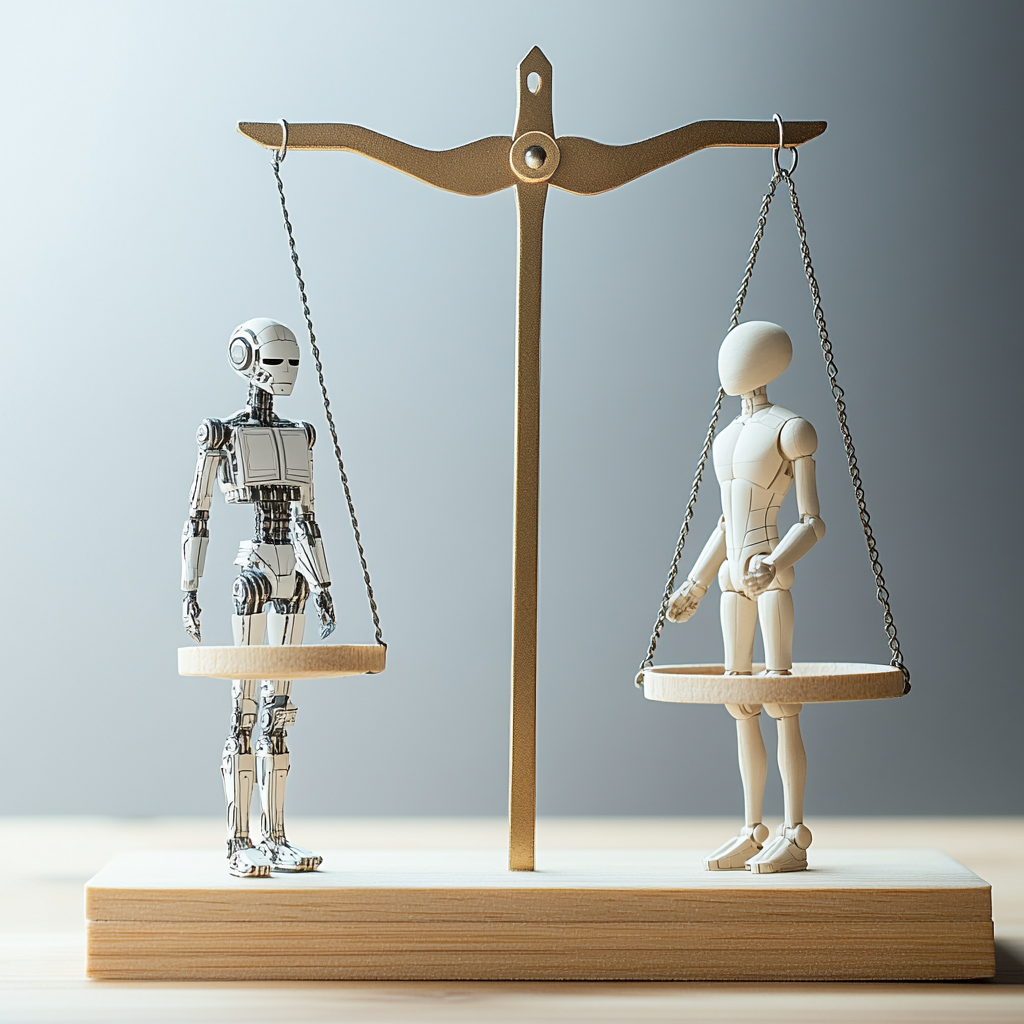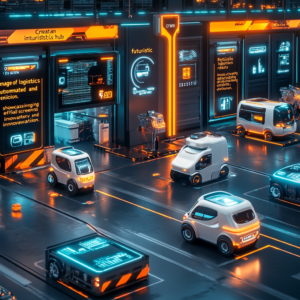
“Balancing Autonomy and Oversight: Navigating Human and AI Leadership in Decision-Making”
The Tug-of-War: Human Oversight vs. Autonomous AI – Who Wears the Crown?
Artificial intelligence is no longer a distant fantasy gracing the pages of sci-fi novels. It’s here, it’s real, and boy, is it shaking things up! As machines step boldly into roles once reserved for humans, the age-old question arises: should we, the flesh-and-blood folks, keep a watchful eye on these silicon brains, or can we just hand over the reins to them completely? This isn’t just a philosophical musing; we’re looking at a debate with real consequences for how we lead, decide, and even exist.
Demystifying AI System Autonomy
Let’s kick things off by getting down to brass tacks: AI system autonomy. Think of it as the new kid on the block who’s not only fluent in algorithms but also has a penchant for making decisions all by itself. From determining the best treatment options in healthcare to piloting our cars through rush hour traffic, autonomous AI is flexing its decision-making muscles in ways that make our jaws drop.
But here’s the kicker: autonomy isn’t just about sleek tech and lightning-fast calculations. It slams into the issues of ethics and accountability like a wrecking ball crashing through a glass ceiling. If an AI makes a critical mistake while determining a patient’s treatment or directing a vehicle, who’s left holding the bag? Spoilers: it’s a complicated mess.
Striking the Right Balance
Finding harmony between AI autonomy and human control is like walking a tightrope at a circus—exciting, but one misstep can lead to chaos. Our trusty autonomous vehicles and diagnostic AI have the potential to save lives and streamline our lives, but the power to decide also brings with it the weight of accountability. When an algorithm decides a patient’s fate, we’re thrust into a labyrinth of ethical dilemmas. Should humans be the final judges of these decisions, or is there merit in trusting AI’s cold hard logic?
Holding the Keys to Accountability
Accountability in the AI realm isn’t a straightforward concept—it’s a quilt stitched from various threads:
Decision-Making Processes: Ever heard of an AI that plays poker? Understanding the rationale behind an AI’s decisions is key. If the AI’s so complex that not even its creators can decipher it, we’ve got a problem. Transparency isn’t just a nice-to-have; it’s absolutely essential.
Legal Responsibilities: Here’s where things really get sticky. If an AI pathway leads to disaster, who’s responsible? The designer, the user, or the AI itself? In domains where stakes are sky-high—think finance or medicine—the path to liability may be more twisted than a carnival funhouse.
Ethical Imperatives: There’s a consensus that humans should be the accountable party, keeping ethics firmly in check. Human oversight can be the guardrail that stops AI from veering off the ethical road into a ditch.
Crafting Human Oversight Mechanisms
Now, simply wishing for oversight isn’t enough. We need robust structures to make sure our futuristic companions stay in line. Here are a few approaches that give humans a fighting chance:
Human-in-the-Loop (HITL): This vibrant strategy puts humans right in the decision-making arena. Think of it as a backstage pass where humans can intervene at critical moments, ensuring the AI plays nice and sticks to our values.
Human-on-the-Loop (HOTL): In this more laid-back role, humans monitor AI from a distance. They don’t intervene unless things go sideways. Great for keeping an eye on the situation without being too hands-on.
Human-in-Command (HIC): Imagine a bouncer at a club only letting VIPs in. This model keeps humans in firm control, particularly in high-stakes situations. It’s about safety and ensuring that we don’t trade our rights for convenience.
The Unmatched Power of Human Judgment
While AI can crunch numbers and digest terabytes of data faster than you can say “machine learning,” there are realms of decision-making where it simply falters. Strategic planning, empathy, and interpreting nuanced situations—these are the handmade quilts of human cognition, delicate and complex.
Limitations of AI: Sure, an AI can sort through thousands of resumes faster than a hiring manager on coffee, but can it truly grasp the subtleties of a candidate’s journey? Or sniff out the best team player amidst a sea of keywords? Not really. AI also loves to cling to the biases nestled in its training data, which is a clear sign that we need human insight in the mix.
Importance of Contextual Understanding: In leadership roles, the stakes are even higher. Navigating murky waters of ambiguous information and dynamic environments demands a pinch of emotional intelligence and a heavy dollop of ethical reasoning—skills that AI still struggles to imitate.
Standing Firm on Ethical Compliance and Transparency
As AI slices through the fabric of society, ethical considerations must be sewn tightly into its seams. We’re talking about fairness, accountability, and respect for privacy as the golden rules of AI deployment.
Contestability and Transparency: If an AI gears up to make a life-altering decision for someone, that person should have the right to question it. Contestability isn’t just a fancy term—it’s the gatekeeper that ensures individuals can challenge decisions that feel unjust. Transparency is the flashlight that shines on the shadowed corners of AI’s operations, making everything a little less mysterious.
Harnessing Expert Insight: The AI landscape is ever-evolving, and with that evolution comes the need for more human watchfulness. Agencies may carve out specialty teams focused on AI ethics, ensuring that all shiny new tech aligns with the broader moral compass we hold dear as human beings.
Embracing a Future of Collaboration
The future looks promising—a dance between human intellect and AI prowess, each partner bringing unique strengths to the table. Instead of viewing AI as the boss, we can embrace it as support, boosting human capabilities and creating a nuanced, efficient work environment.
Wrapping It Up
To put it succinctly, human oversight isn’t just an add-on; it’s essential. As we teem with the potential benefits of autonomous AI, marrying them with ethical oversight and accountability is paramount. Through structured frameworks and transparency, we can harness the powers of AI while keeping our moral compass firmly intact, shaping a future that blends human wisdom with artificial brilliance.
Call to Action
Curious to dive deeper into the electrifying world of AI and human oversight? Stay on the cutting edge of developments—subscribe to our Telegram channel to stay in the know about trends, challenges, and breakthroughs! Join the conversation here: @ethicadvizor

